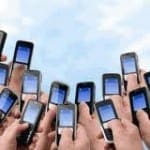 What if you are a smartphone owner who needs food stamps? Or you want to access a “daily deal” that offers free museum admissions to low-income New York City families?
What if you are a smartphone owner who needs food stamps? Or you want to access a “daily deal” that offers free museum admissions to low-income New York City families?
While there are no apps for that, increasingly there’s a demand for smartphone software that serves a broader income base in the U.S.. From 2011 to 2013, nationwide smartphone ownership nearly doubled for low-income adults, jumping from 39% to 77% ownership for low-income 18 to 29 year olds and 26% to 47% for low-income 30 to 49 year olds, according to data from the Pew Research Center. As the cost of plans and devices drop (and with some existing government subsidy programs for mobile devices), those percentages will continue to climb.
How do we deliver something that helps them find resources they need and isn’t just a fancy app that nobody uses?
“What we’re seeing is kind of a major growth in the ownership of smartphones with Internet access within our population,” says Zach Goldstein, director of systems and technology at HealthLeads, a nonprofit that works with hospitals to help doctors write and fill “prescriptions” for life-saving social services alongside their usual prescriptions for medicine. “The advent of smartphones has helped our clients overcome the digital divide,” he says.
Also Why mobile apps are a tool combatting poverty
Tags: Anti-poverty strategies, Digital media, mobile apps, Mobile phones, poverty

